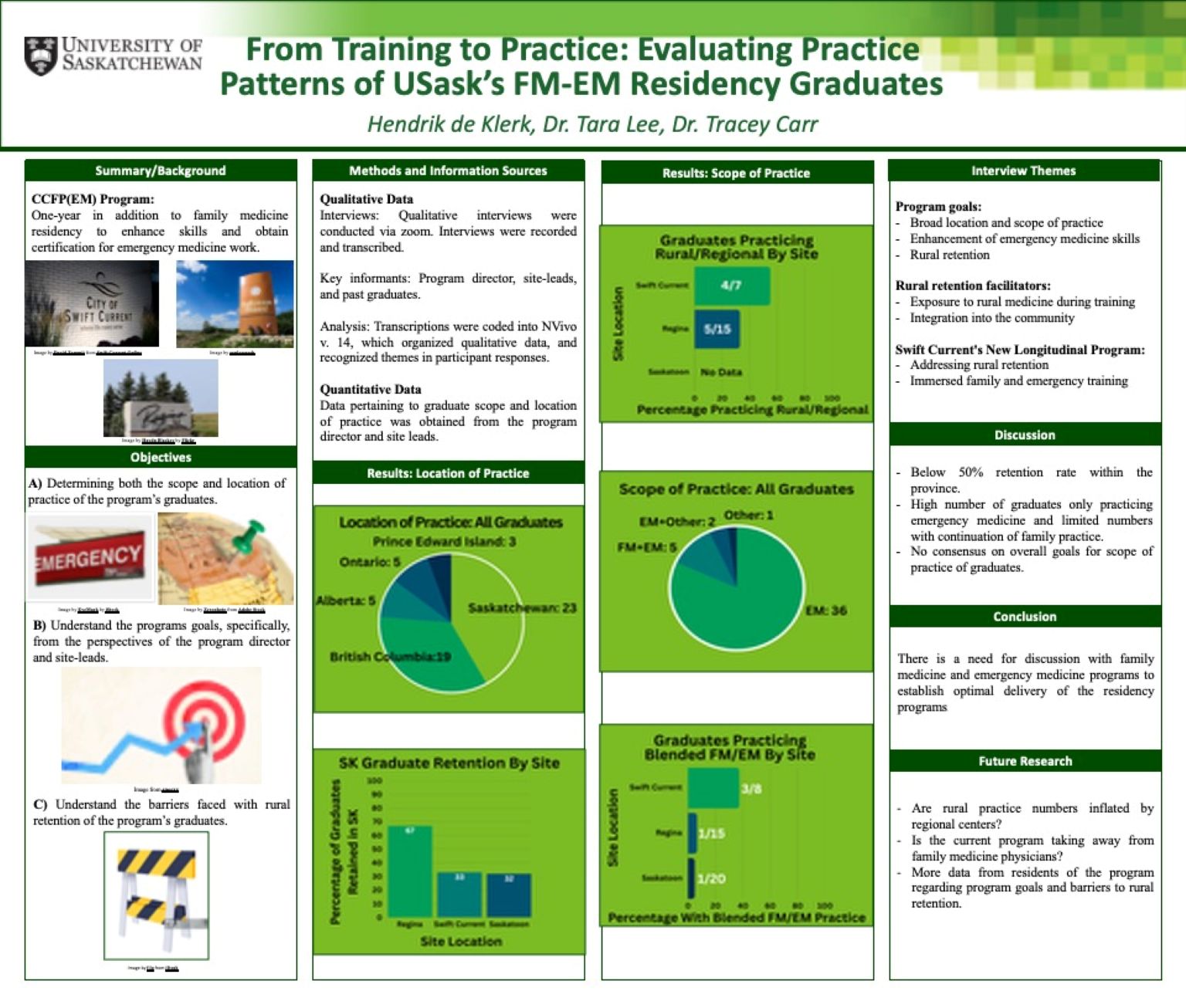
From Training to Practice: An evaluation of Practice Patterns of USask’s FMEM Residency Graduates
Hendrik de Klerk
Background: The Family Medicine-Emergency Medicine residency, one-year program in addition to family medicine residency, focuses on enhancing emergency medicine skills. Our
study aimed to determine a) the program goals, b) the barriers and facilitators faced by rural retention of graduates, and c) the scope and location of practice of program graduates.
Methods: We conducted virtual qualitative interviews with key informants, which were recorded and analyzed to recognize themes in interview responses. We obtained quantitative data on graduate scope and location of practice from the program director and site-leads.
Results: Program goals varied among key informants and rural exposure was the emergent theme for facilitating rural retention. Regarding location of practice, less than half of graduates are currently practicing within the province, and the regional site had the greatest proportion of graduates with a rural practice. Data for scope of practice showed that 36 of 44 (81.8%) graduates are practicing only emergency medicine, while only 5 of 44 (11.4%) graduates have a practice that includes family medicine.
Conclusion: There is a need for discussion with family medicine and emergency medicine programs to establish optimal delivery of the residency programs.
